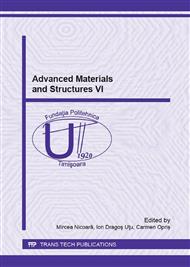p.153
p.159
p.164
p.170
p.176
p.182
p.188
p.194
p.200
Optimization of Synthetic Slag Additions Used in Continuous Casting of Steel
Abstract:
The appropriate use and in adequate quantities of synthetic slags in continuous casting process (insulating coating powder in tundish and respectively lubricant molding powder in crystallizer) gives a good quality of continuous castings products. The paper presents two methods of determining the necessary of slags: using dispersion analysis software Minitab.v17 and optimization of heat transfer in tundish, depending on powder coating thickness, performed with a program made in Mathcad14 and respectively optimization of the molding powder thickness, using an own simulation program. Both methods are based on the properties of steel grade which is casted (in particular the liquidus temperature of the steel) and they can be adapted to the specifics of the continuous steel casting machines.
Info:
Periodical:
Pages:
176-181
Citation:
Online since:
August 2016
Price:
Сopyright:
© 2016 Trans Tech Publications Ltd. All Rights Reserved
Share:
Citation:


